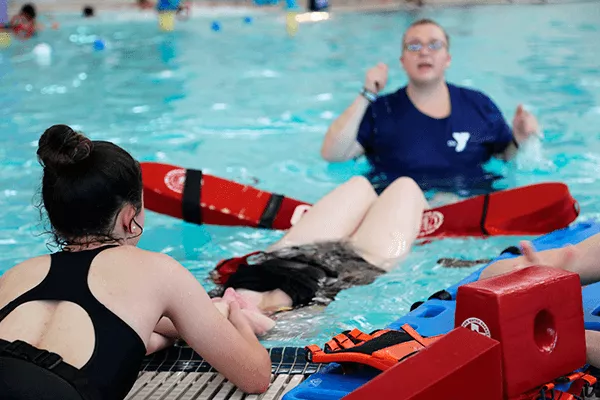Lifeguarding is more than just a summer job; it’s a crucial responsibility that requires extensive training and knowledge. Lifeguards are often the first responders in emergencies at pools, beaches, and water parks, making their role essential for ensuring public safety. To be a lifeguard, one must obtain the proper certification, which not only enhances their skills but also ensures they meet the highest standards of safety and readiness.
This article explores the importance of lifeguard certification, the rigorous process involved, and why the American Lifeguard Association (ALA) offers the best lifeguard certification programs available.
The Importance of Lifeguard Certification
Lifeguard certification is a mandatory requirement for anyone seeking employment as a lifeguard. This certification demonstrates that the individual has received the necessary training in water rescue techniques, CPR, first aid, and emergency response procedures. Without this certification, one cannot legally work as a lifeguard.
Certification is not just about legal compliance; it’s about being prepared to save lives. Drowning is a leading cause of unintentional injury and death worldwide, particularly among children. Lifeguards are the last line of defense against such tragedies, and their ability to respond quickly and effectively is paramount. Lifeguard certification ensures that these professionals are equipped with the knowledge and skills needed to handle various emergency situations, from minor injuries to life-threatening incidents.
The Certification Process: What It Involves
Obtaining lifeguard certification involves a comprehensive training program that covers both theoretical knowledge and practical skills. Here’s a breakdown of what the process typically involves:
- Prerequisites: Before enrolling in a lifeguard certification course, candidates must meet certain prerequisites. These usually include a minimum age requirement (often 15 years old) and the ability to swim a certain distance (typically 300 yards) continuously using specific strokes. Candidates must also demonstrate the ability to perform a timed brick retrieval exercise, which simulates rescuing a submerged victim.
- Classroom Instruction: The theoretical component of the certification program covers essential topics such as water safety, risk management, emergency planning, and the legal responsibilities of a lifeguard. Candidates also learn about the different types of rescues, how to recognize and respond to various medical emergencies, and the proper use of lifesaving equipment.
- In-Water Training: Practical skills are honed through in-water training sessions. Candidates practice rescues, including active and passive victim rescues, spinal injury management, and extrication techniques. They also learn how to perform CPR on adults, children, and infants, as well as how to use an automated external defibrillator (AED).
- Final Examination: The certification process concludes with a final examination, which typically includes both written and practical tests. The written test assesses the candidate’s understanding of the material covered in the classroom, while the practical test evaluates their ability to perform rescues and administer first aid under simulated emergency conditions.
- Certification Renewal: Lifeguard certification is not a one-time achievement. To ensure that lifeguards remain competent and up-to-date with the latest safety protocols, certification must be renewed every two years. This often involves completing a recertification course, which reviews and refreshes the lifeguard’s skills.
Why Choose the American Lifeguard Association?
When it comes to lifeguard certification, the American Lifeguard Association (ALA) stands out as one of the most respected and recognized organizations in the field. Here’s why the ALA offers the best lifeguard certification programs:
- Comprehensive Training Programs: The ALA’s lifeguard certification programs are known for their thoroughness and attention to detail. The training covers all aspects of lifeguarding, from basic water rescue techniques to advanced first aid and CPR. The ALA’s curriculum is designed to ensure that candidates are fully prepared to handle any emergency situation they may encounter on the job.
- Experienced Instructors: The ALA employs highly experienced and certified instructors who bring a wealth of knowledge and practical experience to the classroom. These instructors are not only experts in lifeguarding but also skilled educators who know how to effectively communicate complex concepts and techniques to their students.
- Flexible Learning Options: The ALA offers a range of learning options to accommodate different schedules and learning preferences. In addition to traditional in-person classes, the ALA provides blended learning programs that combine online coursework with in-person training. This flexibility makes it easier for candidates to complete their certification requirements, even if they have busy schedules.
- Nationwide Recognition: The ALA’s lifeguard certification is recognize and accept by employers across the United States. This nationwide recognition ensures that certified lifeguards can find employment opportunities in a wide range of settings, from local community pools to high-end resorts and beaches.
- Commitment to Safety and Excellence: The ALA is commit to promoting the highest standards of safety and excellence in lifeguarding. Their certification programs are continuously update to reflect the latest industry best practices and safety protocols. By choosing the ALA, candidates can be confident that they are receiving the best possible training.
Must Read: Power Of Instagram Stories For Wider Audience
The Impact of Lifeguard Certification
Achieving lifeguard certification is more than just a qualification; it’s a commitment to public safety and a dedication to making a difference in the lives of others. Certified lifeguards are entrust with the responsibility of protecting swimmers and beachgoers. Often under challenging and stressful conditions. Their ability to remain calm, think quickly, and act decisively can mean the difference between life and death.
Moreover, lifeguard certification opens the door to a fulfilling and rewarding career. Lifeguards not only gain valuable skills in leadership, communication. And teamwork but also develop a strong sense of responsibility and discipline. These attributes are highly transferable and can benefit individuals in various aspects of their personal and professional lives.
Conclusion
In conclusion, lifeguard certification is an essential step for anyone aspiring to become a lifeguard. It ensures that individuals are well-prepare to perform their duties and respond effectively in emergency situations. The American Lifeguard Association offers the best lifeguard certification programs, providing comprehensive training, experienced instructors, and a commitment to excellence.
Must Read: Pet Info: Fun Facts About Favorite Breeds




